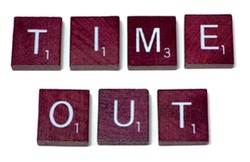Recently we’ve been delving into different types of differential reinforcement. We’ve taken a look at why differential reinforcement is valuable as well as how to use DRI. Today, we’ll look at two more that are closely related: Differential Reinforcement of Alternative behavior (DRA) and Differential Reinforcement of Other behavior (DRO).
 DRA is “a procedure for decreasing problem behavior in which reinforcement is delivered for a behavior that serves as a desirable alternative to the behavior targeted for reduction and withheld following instances of the problem behavior (e.g., reinforcing completion of academic worksheet items when the behavior targeted for reduction is talk-outs)” (Cooper, Heron, & Heward, 2007). The key thing to remember here is if you are implementing a DRA, a specified alternative behavior has been selected for reinforcement.
DRA is “a procedure for decreasing problem behavior in which reinforcement is delivered for a behavior that serves as a desirable alternative to the behavior targeted for reduction and withheld following instances of the problem behavior (e.g., reinforcing completion of academic worksheet items when the behavior targeted for reduction is talk-outs)” (Cooper, Heron, & Heward, 2007). The key thing to remember here is if you are implementing a DRA, a specified alternative behavior has been selected for reinforcement.
For example, Miss Watson wants her students to stop calling out answers. She decides she will not reinforce students calling out. In her situation, this means that if a student calls out she will not provide them with any attention, including reminders not to call out. She is going to reinforce the alternative behavior of raising your hand. This is a very common use of DRA, and it works well.
In another example, Lisa’s daughter often cries when she doesn’t get what she has asked for. Sometimes this results in attention, and sometimes it results in Lisa finally giving in and providing the item. Lisa decides to use DRA to address this behavior. With this intervention, any time that her daughter says “Okay” instead of crying when refused an item, Lisa provides reinforcement in the form of attention or playing with a different item than was requested.
DRO is quite similar. It is “a procedure for decreasing problem behavior in which reinforcement is contingent on the absence of the problem behavior during or at specific times” (Cooper, Heron, & Heward, 2007). With DRO, you would reinforce any behavior that wasn’t the behavior targeted for change.
For example, Mrs. Cuthbert notices that Anne is staring out the window frequently during lass. She decides to implement DRO. She sets a MotivAider for 5 minute intervals. Each time the MotivAider buzzes, she looks up and if Anne is doing any behavior other than staring out the window, Mrs. Cuthbert provides reinforcement. (There are two ways to implement DRO, which we’ll get to in a future post.)
DRO is especially beneficial because it is widely applicable, relatively rapid, and often durable and general (Mayer, Sulzer-Azaroff, & Wallace, 2014). However, you should be aware that you may run the risk of reinforcing other unwanted behavior. It can also make you focus on the “negative,” since you’re always looking for the problem behavior or the absence of the problem behavior (as opposed to a specific desired behavior, as in DRA.)
DRA and DRO are useful tools to add to your arsenal of behavior change tools. You may be wondering why it’s important to consider the differences between DRI, DRA, and DRO. The key to remember is that using these terms and understanding the possible strategies for reinforcement improves your implementation of interventions and your communication with other adults implementing those interventions.
References
Cooper J.O, Heron T.E, Heward W.L. Applied behavior analysis (2nd ed.) Upper Saddle River, NJ: Pearson; 2007
Optional Text: Mayer, G. Roy, Sulzer-Azaroff-B. & Wallace, M. (2013). Behavior analysis for lasting change (3rd ed.). Cornwall-on-Hudson, NY: Sloan Publishing.
WRITTEN BY SAM BLANCO, MSED, BCBA
Sam is an ABA provider for students ages 3-12 in NYC. Working in education for ten years with students with Autism Spectrum Disorders and other developmental delays, Sam has developed strategies for achieving a multitude of academic, behavior, and social goals. Sam is currently pursuing her PhD in Applied Behavior Analysis at Endicott College.


 DRI is not always the best option. For example, it may be very challenging to come up with an incompatible behavior. Or, in the case of self-injurious or aggressive behavior, it may be dangerous to use such an intervention.
DRI is not always the best option. For example, it may be very challenging to come up with an incompatible behavior. Or, in the case of self-injurious or aggressive behavior, it may be dangerous to use such an intervention. In B.F. Skinner’s phenomenal book The Technology of Teaching, he briefly discusses problems with punishment. He explains that the use of punishment (defined as adding or subtracting something from the environment in order to reduce the occurrence of a behavior), is not as clear-cut as we might imagine. When we attempt to punish a behavior, it’s quite likely that we will unintentionally suppress a broader range of behaviors than we intended.
In B.F. Skinner’s phenomenal book The Technology of Teaching, he briefly discusses problems with punishment. He explains that the use of punishment (defined as adding or subtracting something from the environment in order to reduce the occurrence of a behavior), is not as clear-cut as we might imagine. When we attempt to punish a behavior, it’s quite likely that we will unintentionally suppress a broader range of behaviors than we intended.

 The time-out ribbon may be an excellent solution for just those types of instances. When Foxx and Shapiro (1978) first wrote about the time-out ribbon, they referred to it as “nonexclusionary time-out,” meaning the individual does not have to be excluded from an environment or activity to be “in time-out.” In their initial study, all students wore a ribbon on their wrist. When the individual has the time-out ribbon on, they have access to socially-mediated reinforcement. If the time-out ribbon is removed, they do not have access to that reinforcement. (Foxx & Shapiro also note that it does not have to be a ribbon, but could be anything that is easy to wear and easy to remove.) However, by again demonstrating appropriate behavior, the ribbon can be placed again on the individual’s wrist.
The time-out ribbon may be an excellent solution for just those types of instances. When Foxx and Shapiro (1978) first wrote about the time-out ribbon, they referred to it as “nonexclusionary time-out,” meaning the individual does not have to be excluded from an environment or activity to be “in time-out.” In their initial study, all students wore a ribbon on their wrist. When the individual has the time-out ribbon on, they have access to socially-mediated reinforcement. If the time-out ribbon is removed, they do not have access to that reinforcement. (Foxx & Shapiro also note that it does not have to be a ribbon, but could be anything that is easy to wear and easy to remove.) However, by again demonstrating appropriate behavior, the ribbon can be placed again on the individual’s wrist. Often, we focus on how to improve the behavior of an individual, but there are many times in which teachers must figure out a way to improve the behavior of the entire class. In ABA, we might implement a group contingency, a strategy in which reinforcement for the whole group is based upon the behavior of one or more people within the group meeting a performance criterion (Cooper, Heron, & Heward, 2007).
Often, we focus on how to improve the behavior of an individual, but there are many times in which teachers must figure out a way to improve the behavior of the entire class. In ABA, we might implement a group contingency, a strategy in which reinforcement for the whole group is based upon the behavior of one or more people within the group meeting a performance criterion (Cooper, Heron, & Heward, 2007).
